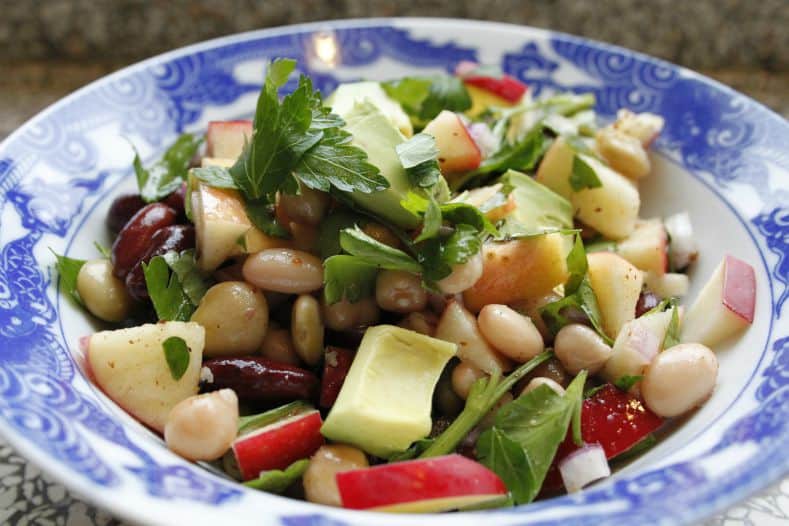What’s With Beans?
What’s with Beans?
This article is about the little known controversy around beans.
By Travis Wade
Vegans- “Eat them.”
Paleos- “No way!”
Timothy Ferris, author of “The 4-Hour Body“- “Eat them.”
Dr. Mark Hyman- “Don’t eat them.”
Every article I’ve read says something different about beans. Who’s right? Well, that depends on what you want to accomplish with your diet.
Vegans Love Beans
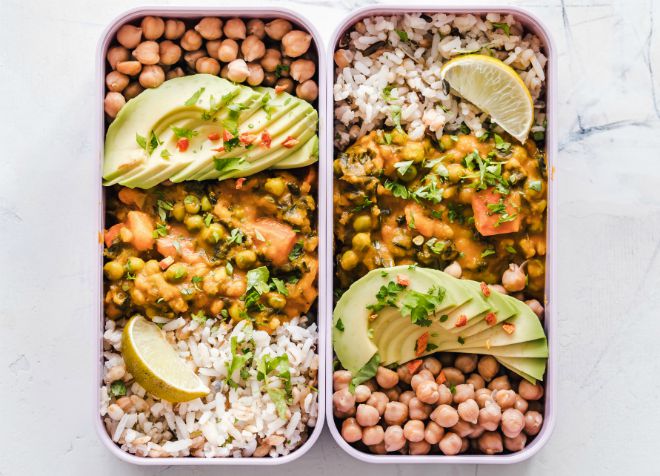
Beans: Nutritional Powerhouse or Just Overhyped Legumes?
Ask a vegan why they love beans, and they’ll likely hit you with the nutritional resume—high in protein, fiber, and carbohydrates, packed with iron, folate, magnesium, potassium, and a handful of B vitamins. Sounds impressive, right?
Well, not so fast.
While beans do contain a solid list of nutrients, there’s a small catch—most of them don’t survive the cooking process.
That’s right. By the time your beans go from rock-hard pebbles to something actually chewable, a good chunk of their micronutrient content has been washed away. So while they technically contain phosphorus, zinc, copper, manganese, and vitamins B1, B3, B5, and B6, the actual amounts that make it to your plate aren’t quite as impressive as the nutrition labels suggest.
It’s kind of like bragging about owning a Ferrari when, in reality, it’s been sitting in the shop for months—it still exists, but it’s not exactly useful.
So, should you eat beans? They’re still a decent plant-based protein source. Just don’t expect them to be the nutritional goldmine they’re often made out to be.
The Great Paleo Debate: To Bean or Not to Bean?
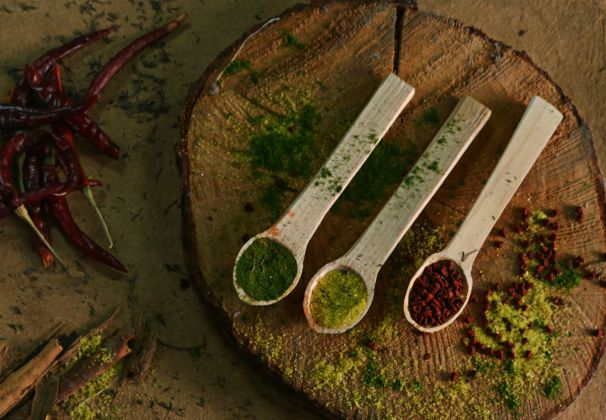
If you’ve ever found yourself caught in a conversation with paleo enthusiasts, you’ll quickly realize one thing: they don’t even agree with each other on what’s “truly” paleo.
Some argue that anything our ancient ancestors could have foraged, hunted, or clubbed over the head is fair game. Others insist that if it wasn’t explicitly featured on a cave wall drawing, it’s off-limits.
Lately, some of the more scientific-minded paleo experts have taken things a step further—suggesting we study ancient teeth to figure out what early humans actually ate.
Yes, you read that right. We’re now examining the fossilized dental records of our cave-dwelling predecessors to settle modern diet debates.
And guess what? Turns out, those Paleolithic troglodytes did, in fact, eat beans.
So if you’re a paleo purist, this means your distant ancestors have spoken (or at least, chewed)—and beans are on the menu.
That is, unless your particular paleo faction disagrees—which, let’s be honest, they probably do.
Tim Ferriss and the “Magic” of Beans: Weight Loss Superfood or Just Another Trend?
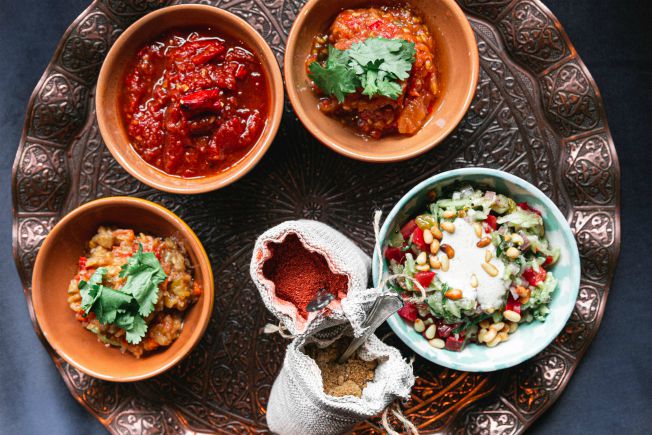
Tim Ferriss, the productivity hacker and author of The 4-Hour Body, swears by beans—claiming they’re the magic bullet for weight loss.
Why? Because beans have the perfect combo of high carbs, fiber, and protein, all while boasting a low glycemic index. This makes them a “slow-carb” food, which Ferriss and the weight loss community love.
But does it actually work? Surprisingly, yes, it does.
The Science of Beans and Weight Loss
The glycemic index (GI) of beans is low, meaning they digest slowly and keep blood sugar levels stable—which translates to longer-lasting satiety and fewer cravings. The high fiber and protein content reinforce this effect, making you feel full longer. And when you feel full longer, you eat less—which, unless you’re defying the laws of physics, leads to weight loss.
Sounds great, right? Well, before you start chugging a can of baked beans and waiting for the magic to happen, there’s a catch.
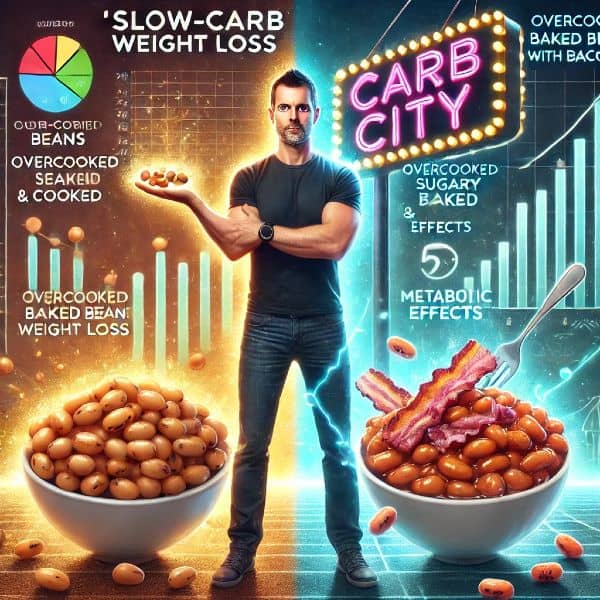
Not All Beans Are Created Equal
According to experts, the glycemic index of beans depends on how they’re prepared.
- Lightly soaked and cooked beans? Low GI. Weight-loss friendly.
- Overcooked, sugary, processed beans? High GI. Welcome to Carb City.
So, if you’re thinking back to Mom’s baked beans loaded with bacon and brown sugar—yeah, those were delicious. They also happen to be one of the highest glycemic index foods out there.
Translation? They’re not helping your waistline.
Final Verdict: Should You Eat Beans for Weight Loss?
If you prepare them properly (i.e., soak them, cook them lightly, and avoid drowning them in sugar), beans can absolutely be a great tool for weight loss.
But if your idea of “slow-carb” is a heaping plate of brown sugar-glazed baked beans with extra bacon, then congratulations—you’ve just discovered how to make beans work against you.
Are Beans Trying to Kill You? Dr. Mark Hyman Thinks So

The photo was taken from https://drhyman.com
Dr. Mark Hyman is the reason I started questioning my blind faith in beans. Until then, I hadn’t really looked into why he wasn’t a fan—I just assumed he had a personal vendetta against legumes. But the more I dug into the research, the more I found myself nodding along and thinking, “Oh… so beans might actually be little troublemakers.”
It turns out, plants have their own version of self-defense. Since they can’t exactly run away from predators (or carry tiny swords, which would be objectively hilarious), they’ve evolved a different strategy: chemical warfare.
One of their main weapons? Phytic acid (a.k.a. phytate).
Phytates: The Nutrient Thieves Lurking in Your Beans
Phytates bind to minerals like iron, calcium, and zinc, preventing your body from absorbing them. It’s like they invite the minerals to a party in your digestive tract and then lock the doors so they can’t actually be used.
Now, for meat-eaters, this isn’t as big of a problem because animal products provide plenty of bioavailable minerals. But for vegetarians and vegans who rely heavily on plant-based sources? Phytates can make it harder to get essential nutrients.
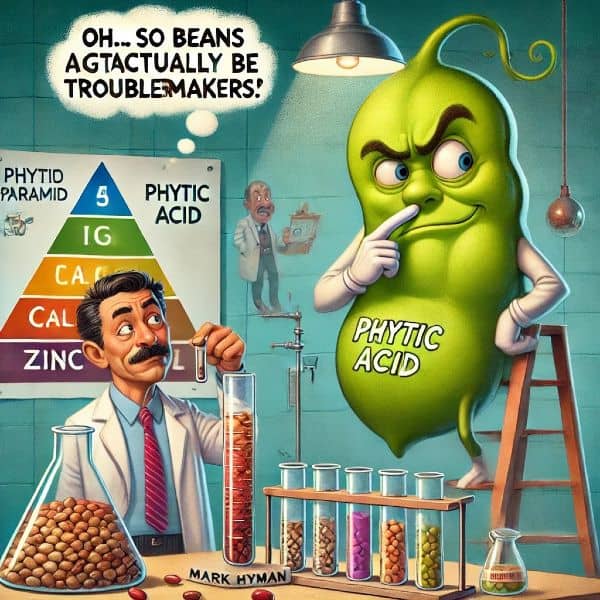
Also, Let’s Be Honest—Beans Aren’t Exactly Crave-Worthy
Even if you ignore the phytate issue, beans don’t exactly win any awards for taste.
In fact, studies have shown they are one of the least addictive foods on the planet. Nobody has ever woken up in the middle of the night craving a bowl of plain black beans.
And let’s be real—how often do you see people eating beans without drowning them in salt, sauce, or some kind of seasoning to make them palatable?
Final Thoughts: Are Beans Worth It?
If you’re a hardcore bean lover, don’t panic—proper preparation (like soaking and fermenting) can reduce phytates and make beans more digestible. But if you’ve ever felt like beans just don’t sit right with you, Dr. Hyman might be onto something.
At the end of the day, beans aren’t essential, they aren’t addictive, and depending on how they’re prepared, they might not even be that nutritious. So, if you’ve been forcing yourself to eat them because you think they’re a superfood, maybe it’s time to ask yourself:
Do you actually love beans… or have you just been brainwashed by the food pyramid?
The Hidden Danger of Beans: Copper Overload and Why Your Body Might Be Crying for Steak
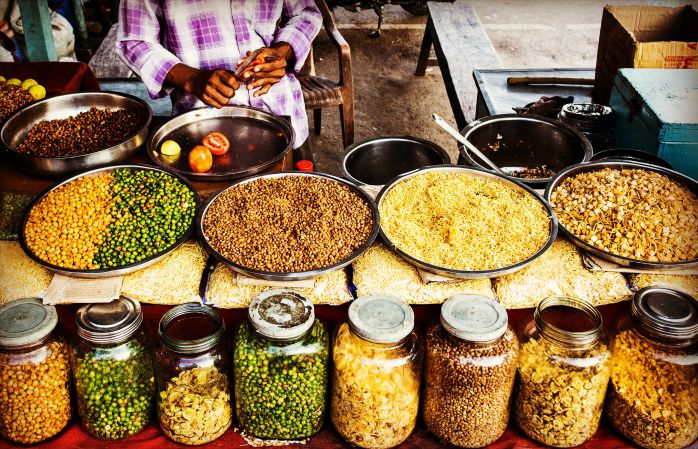
If you’ve ever heard the phrase “too much of a good thing can be bad”, let me introduce you to copper toxicity, the underappreciated villain of plant-based diets.
Beans—beloved by vegetarians and budget-conscious meal preppers everywhere—are surprisingly high in copper. Now, before you panic, copper is an essential nutrient, but only in small amounts. When paired with low zinc levels (thanks to a lack of red meat in the diet), copper can start behaving less like a helpful mineral and more like an uninvited houseguest that refuses to leave.
Copper Toxicity: When Too Many Beans Turn Against You
While vegetarians are the prime candidates for copper overload (because beans provide plenty of copper but not enough zinc to balance it out), anyone with a high-copper diet can run into this problem.
And here’s where things get really fun: copper toxicity makes you hate red meat.
Yep, you read that right. If you’re overloaded with copper, eating red meat stimulates the thyroid and adrenal glands, which then start releasing stored copper into your bloodstream—a process that can make you feel absolutely terrible. The result?
- Headaches
- Emotional instability (a.k.a. why your friend on a bean-heavy diet is crying over a mildly sad commercial)
- Fatigue that no amount of naps can fix
- Insomnia (because why sleep when you can stare at the ceiling, overthinking everything?)
- Depression and brain fog (suddenly forgetting why you walked into a room)
- Skin rashes that make no sense
- Premenstrual syndrome (PMS) that feels like it was designed by a particularly cruel villain
Basically, if your diet is high in beans and you’ve mysteriously developed the emotional range of a soap opera character, copper might be the culprit.
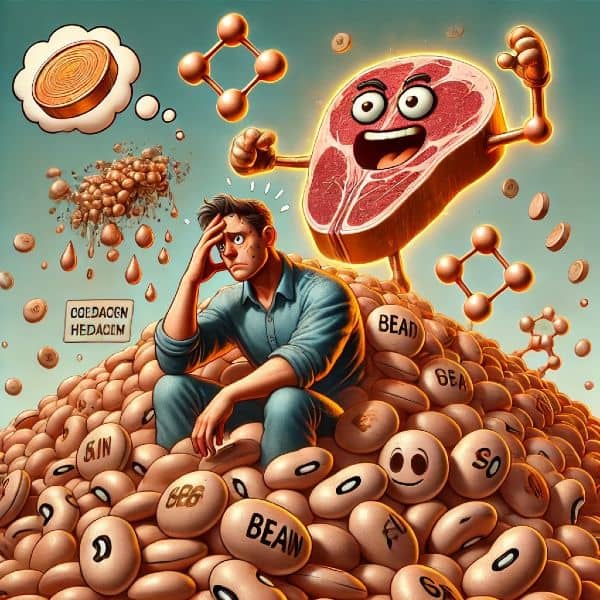
The Cure? More Steak, Less Stress
The good news? Copper toxicity isn’t permanent.
Small, steady doses of red meat can help rebalance things—though, if you’re already dealing with high copper levels, you might instinctively dislike the idea of eating steak. That’s your overloaded system fighting against what it actually needs—kind of like when you ignore your phone’s low battery warning until it dies at the worst possible moment.
Once your body readjusts and sheds the excess copper, those frustrating symptoms disappear—and you might even find yourself craving a good burger again.
So, if you’re a vegetarian or just someone living off beans and wondering why you’re always exhausted, irritable, and suddenly uninterested in steak, it might be time to rethink your copper-to-zinc ratio.
Because as it turns out, balance isn’t just important for life—it’s also important for your minerals.
Lectins: The Tiny Troublemakers Hiding in Your Food

Ever heard of lectins? If not, buckle up—because these little proteins might just be the dietary villains you never knew you had to worry about.
Lectins are notorious for their role in something called Leaky Gut Syndrome—a condition that, depending on which doctor you ask, either doesn’t exist or is ruining your health as we speak. While the medical community is still debating its legitimacy, it’s getting harder to ignore the mounting evidence that a compromised gut barrier is, in fact, a real problem.
How Lectins Turn Your Gut Into a War Zone
So, what’s the big deal with lectins? Well, these little guys have a disturbing hobby: binding to human body cells and destroying them.
Here’s how it plays out:
Lectins attack the lining of your gut. The gut lining, which is supposed to be a protective barrier, becomes more permeable—meaning things that should stay inside (like partially digested food and toxins) start leaking into the bloodstream.
Once in the bloodstream, lectins don’t stop their chaos. They continue binding to and destroying other cells, triggering system-wide inflammation that can contribute to everything from digestive issues to autoimmune disorders.
And the worst part? Lectins are everywhere in plants, but they’re particularly concentrated in grains, GMOs, pasteurized dairy, beans, nuts, and seeds. In other words, some of the so-called “healthy” foods we eat might be secretly launching an internal attack.
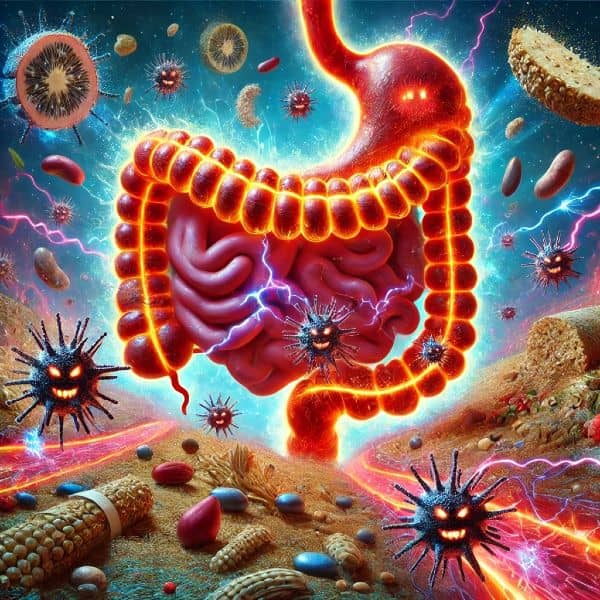
So, Should We Panic and Stop Eating Everything?
Not necessarily. While lectins sound like tiny dietary supervillains, our ancestors figured out ways to neutralize them long before modern science got involved. Soaking, fermenting, sprouting, and cooking foods properly can significantly reduce lectin content—which is why traditional food preparation methods actually make a lot of sense.
The real problem? Modern diets have abandoned these processes in favor of convenience, meaning we’re now consuming lectins in much higher amounts than ever before.
So, if you’ve been struggling with digestive issues, inflammation, or mysterious health problems that no one can quite explain, lectins might be one piece of the puzzle. And if you ever needed an excuse to swap out processed grains for a juicy steak, well… consider this your sign.
GMOs: When Science Decided to Weaponize Your Salad
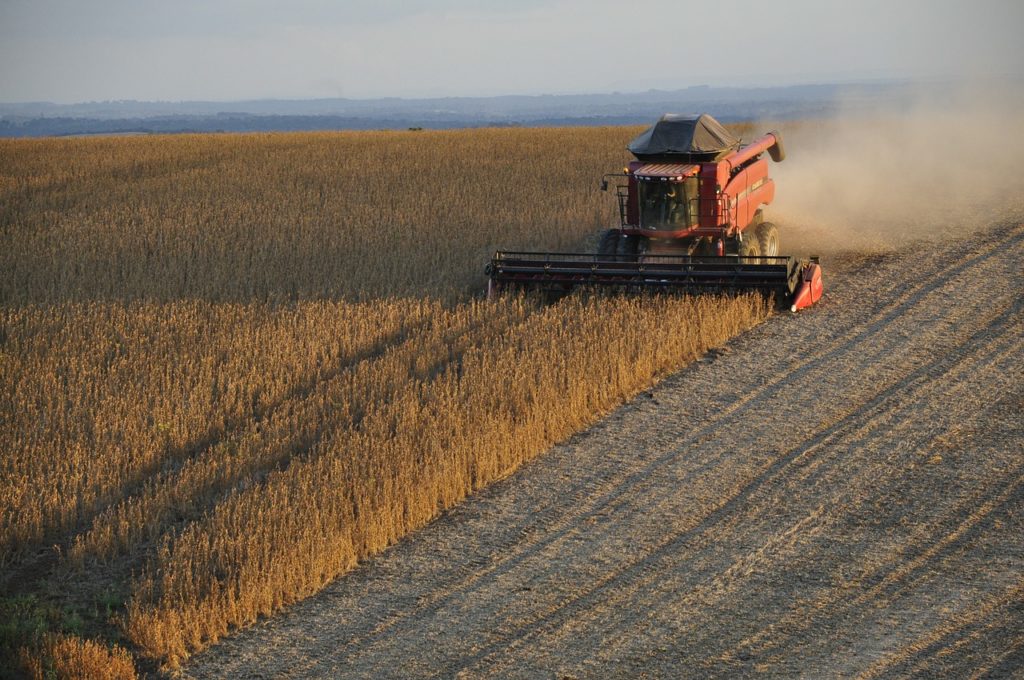
GMOs—genetically modified organisms—sound like something out of a sci-fi movie, and honestly, the reality isn’t far off. One of the brilliant (read: questionable) ideas behind genetically modifying crops was to make them more pest-resistant by increasing their natural toxins. In other words, they took plants and made them so chemically unappealing that even bugs won’t touch them.
Let that sink in for a second.
A friend of mine once planted organic and non-organic potatoes side by side on their farm. The results? The bugs devoured the organic potatoes while completely ignoring the GMO ones. Now, I don’t know about you, but if the bugs—who literally eat garbage—refuse to touch something, that’s probably a good sign that we shouldn’t be eating it either.
And that’s just the beginning.
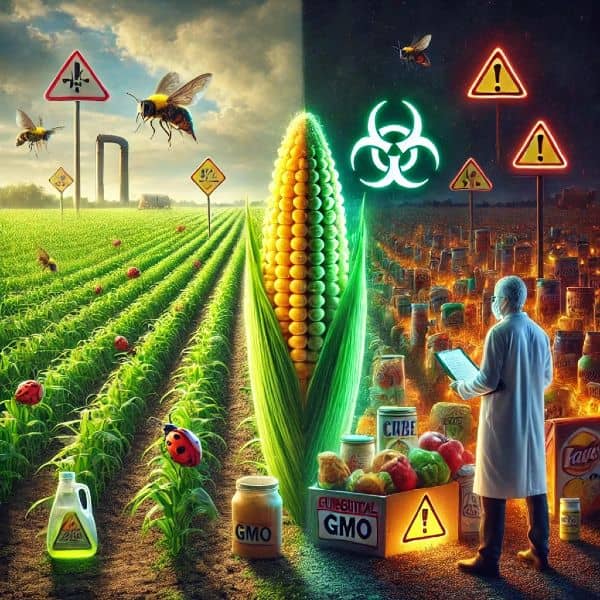
The GMO Takeover: Corn, Soy, and the Sugar Problem
If you’re eating packaged foods, congratulations—you’re eating GMOs whether you like it or not. Nearly all soybeans, corn, grains, and processed sugars come from genetically modified crops. If you flip over a snack package, chances are it contains at least one (if not all) of these culprits.
And if that wasn’t bad enough, sugar—particularly the high-fructose corn syrup that sneaks into almost everything—synergistically amplifies inflammation, fuels bad bacteria and yeast in your gut, and generally makes your body hate you.
Oh, and let’s not forget the preservatives and other chemical additives thrown into the mix for good measure. Because why stop at just one way to ruin your health when you can have a buffet of problems?
Final Thoughts: Should You Panic?
I won’t tell you to live in fear of every bite you take—but it might be a good idea to start questioning where your food comes from. If bugs actively refuse to eat something, if it’s been engineered to resist nature itself, or if it contains ingredients that sound more like a chemistry experiment than actual food, maybe—just maybe—it’s not the best thing to put in your body.
Or, you know, keep eating it and see if you, too, become pest-resistant. Your call.
The Bean Dilemma: How to Cook Them Without Poisoning Yourself
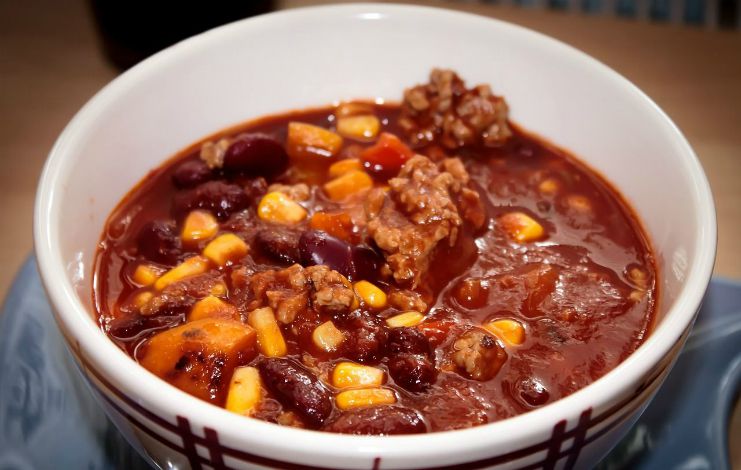
Good news: You can neutralize phytates and lectins in beans.
Bad news: It’s a bit of a culinary science experiment.
The best ways to reduce these anti-nutrients include:
✔ Soaking the beans in water like you’re giving them a spa day
✔ Sprouting them, which sounds fancy but just means letting them start to grow
✔ Fermenting them, which makes them slightly less toxic but, let’s be honest, a little less appetizing
✔ Boiling them at 100°C for at least 10 minutes, because heat helps break down lectins
However, there’s a trade-off—the more you soak and boil beans, the more nutrients you lose. Plus, boiling them also increases their glycemic index, meaning you’re removing the bad stuff but also making them spike your blood sugar faster. It’s like fixing one problem only to create another.
When Beans Become a Literal Danger to Your Health
Cooking beans at too low a temperature can actually make them worse, not better. Slow-cooking chili? Turns out, that’s a potential death trap.
Here’s the shocker: People die every year from lectin poisoning caused by improperly cooked kidney beans.
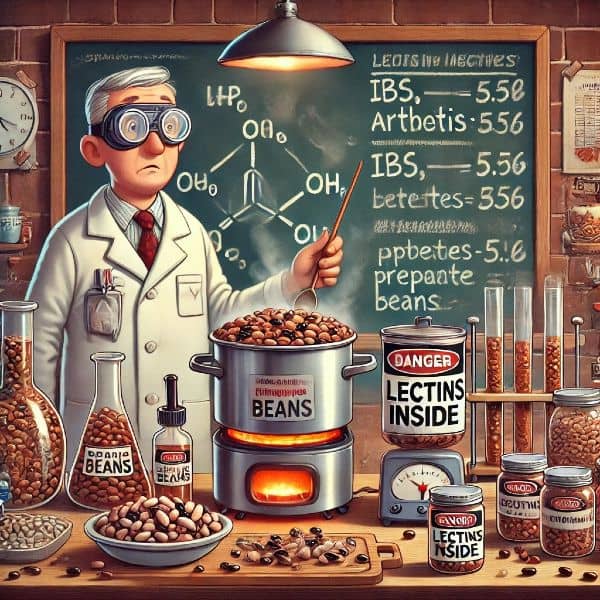
Why? Because kidney beans are one of the most lectin-packed foods out there, and slow cookers don’t get hot enough to break them down. So, while your chili might smell delicious, it could also be covertly launching a biochemical attack on your gut.
And if you thought the worst thing beans could do was cause gas, think again. Studies have linked beans to a surprising number of health issues, including:
- IBS and Crohn’s disease (for when your digestive system just gives up on life)
- Arthritis and multiple sclerosis (because apparently, beans enjoy triggering inflammation)
- Peptic ulcers (as if beans weren’t already uncomfortable enough)
- Allergies (because why not add that to the list?)
- Type 2 diabetes (thanks to that increased glycemic index we mentioned earlier)
Final Verdict: Are Beans Worth the Effort?
At this point, beans are sounding less like a humble pantry staple and more like a dietary landmine. Yes, you can reduce the toxins with the right preparation, but by the time you’ve soaked, sprouted, boiled, and prayed over them, you have to wonder—was it really worth it?
Or maybe just… eat something that doesn’t require a science degree to make it safe.
Plants Are Playing 4D Chess: How They Use Hormones to Outsmart Predators (Including Us)
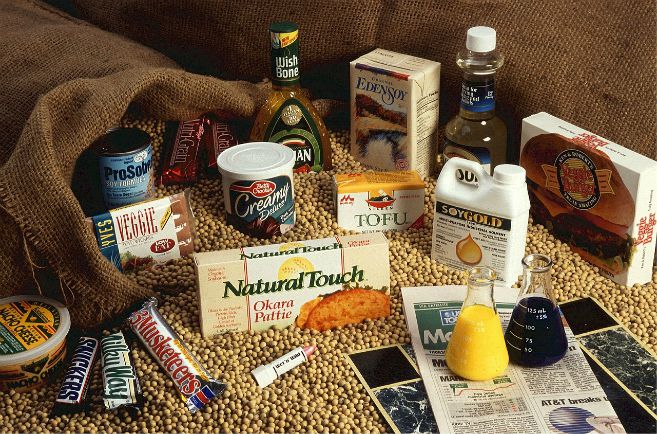
As if toxins and digestive sabotage weren’t enough, plants have another sneaky defense mechanism up their leafy sleeves—messing with fertility.
Enter phytoestrogens.
Now, before you panic, phytoestrogen is not actual estrogen, but it mimics estrogen in the body, throwing hormone levels completely out of whack. The result? Hormonal imbalance, sluggish metabolism, and—brace yourself—potential impotence in male predators.
Yes, you read that correctly. Some plants have evolved to interfere with reproduction as a survival strategy. If their predators (or in this case, us) aren’t making more of themselves, there are fewer threats in the next generation. Ruthless, right?
Why Messed-Up Estrogen Levels Are a Problem for Everyone
While men take the biggest hit in the form of lower testosterone, low libido, and the dreaded “dad bod” effect, high estrogen isn’t great for women either. One of the biggest concerns? Low thyroid function.
Since your thyroid controls metabolism, when it slows down, so does everything else—fatigue, weight gain, and the kind of sluggishness that makes you wonder if you need coffee or a long nap or both.
And guess which food is absolutely packed with phytoestrogens?
That’s right—soybeans.
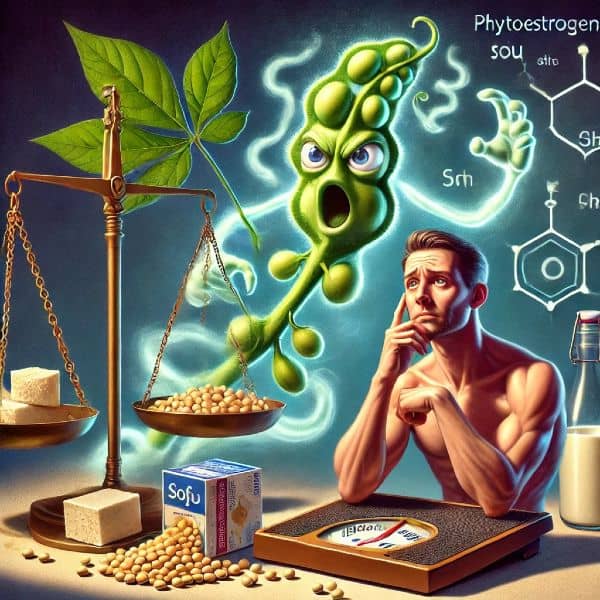
Soy: The Hormonal Wild Card in Your Diet
Soy isn’t just a little high in phytoestrogens—it’s practically the poster child for them. This is why soy-based foods (like tofu, soy milk, and processed plant-based alternatives) can have unintended hormonal effects, especially when consumed in large amounts.
So, while some people treat soy as a health food, others are looking at it and thinking, “Wait… is this plant actively trying to make me less of a man?”
Final Thoughts: Maybe Don’t Let Plants Win
It’s kind of impressive, really. Plants can’t run, fight, or bite back, so they developed biochemical warfare instead.Not only do they produce toxins that mess with digestion, but some also subtly hijack hormone levels to make sure their predators (a.k.a. us) aren’t sticking around for too many generations.
Clever? Yes.
Slightly terrifying? Also yes.
So, if you’re downing soy like it’s the elixir of life, you might want to rethink your strategy—because nature is always playing the long game.
FODMAPs: Why Some Foods Turn Your Gut Into a Science Experiment
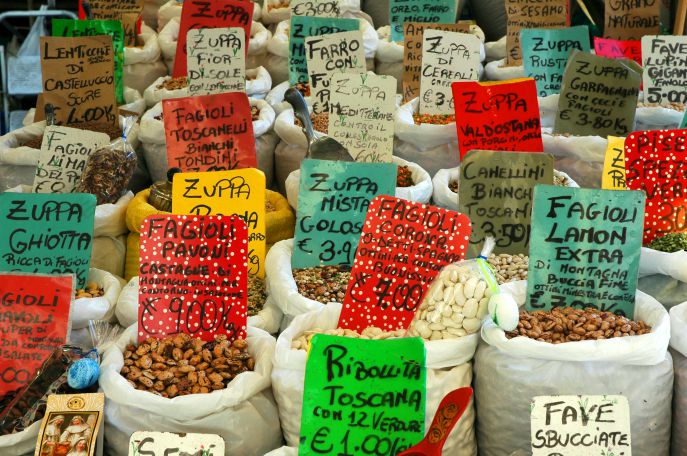
FODMAP might sound like a futuristic tech company or a government agency you don’t want investigating you, but it’s actually an acronym for Fermentable Oligosaccharides, Disaccharides, Monosaccharides, and Polyols—a fancy way of saying “certain carbs that wreak havoc on your digestive system.”
These hard-to-digest carbohydrates get broken down in the gut and ferment into sugars, which, for some people, leads to bloating, cramping, and an unfortunate need to socially distance—whether you want to or not.
And guess what? Beans are loaded with FODMAPs.
The Science of Gas (A.K.A. Why Beans Have a Reputation)
Here’s a fun fact: whenever something ferments, a gas by-product is always involved. So, when you eat high-FODMAP foods, your gut bacteria get to work fermenting away—and the result? Well, let’s just say it’s definitely not silent, and it’s not exactly deadly (but it is inconvenient).
Put simply, beans turn your intestines into a microbrewery, and you’re the unwilling test subject.
Pardon me—my friend’s an A-hole.
Should You Avoid FODMAPs?
Not everyone reacts terribly to high-FODMAP foods, but if you constantly feel bloated, uncomfortable, or like you could clear a room at a moment’s notice, it might be worth reassessing your bean intake.
Because while beans might be a good source of fiber and protein, they also might be the reason you’re one bite away from a gastrointestinal rebellion.
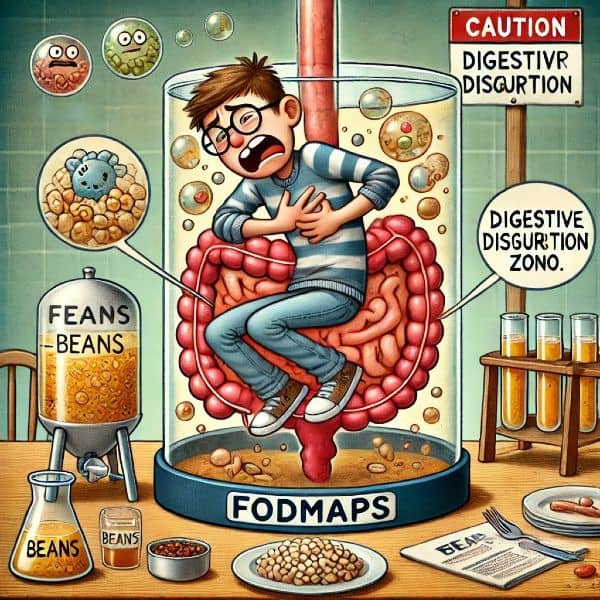
Table 2
FODMAPs4,11
| High FODMAP foods | Low FODMAP foods |
| Asparagus, artichokes, broccoli, cabbage, cauliflower, garlic, leek, onion, sugar snap peas | Alfalfa, bean sprouts, green beans, bell peppers, bok choy, carrots, celery, cucumber, eggplant, kale, lettuce, radish, spinach, squash, tomato, turnip, zucchini |
| Apples, blackberries, pears, mango, watermelon, nectarines, peaches, plums, dried fruits | Banana, blueberry, cantaloupe, honeydew, grapes, kiwi, orange, pineapple, raspberry, strawberry |
| Milk (cow, goat, sheep), yoghurt, soft cheese, cream, custard, ice cream | Lactose-free milk, lactose-free yogurts, hard cheese |
| Legumes/pulses | Meats, fish, chicken, eggs, tofu, tempeh |
| Rye, wheat breads, wheat-based cereals, wheat pasta | Gluten-free bread and pasta, sourdough spelt bread, oats, rice, quinoa |
| Cashews, pistachios | Almonds, hazelnuts, pumpkin seeds walnut, macadamia, peanut, pecan, pine nut |
| Sauce, jam, salsa or salad dressing with high fructose corn syrup, honey, agave, carob powder, artificial sweeteners (mannitol, sorbitol, xylitol) | Jelly, marmalade, butter, nut butters, mustard, mayonnaise, olives, cocoa powder, vinegar, soy sauce, cooking oils |
Table taken from: https://www.ncbi.nlm.nih.gov/pmc/articles/PMC4944381/
Peanuts: The Bean in Disguise That’s Plotting Against You
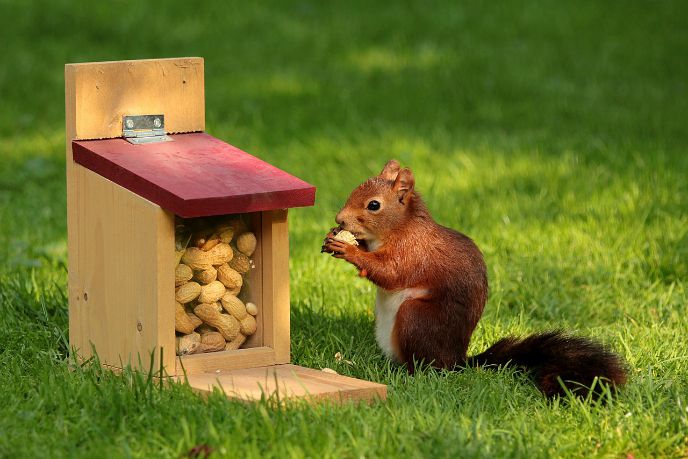
Let’s start with a shocking truth: peanuts aren’t actually nuts. That’s right—despite their name, they belong to the bean family, which means they come with all the same built-in plant toxins that other legumes use as chemical warfare against predators.
But wait, it gets worse.
Peanuts also contain aflatoxin, a metabolite of mold that just happens to be one of the most potent carcinogens known to man. Yes, you read that correctly—peanuts aren’t just playing defense, they’re actively waging war on your health.
Aflatoxin: The Unwanted Extra in Your Peanut Butter
Aflatoxin is the by-product of mold growth on peanuts, and once it’s there, your body is forced to deal with it—because unlike some toxins, you can’t just cook it away.
And let’s be honest—who actually needs more carcinogens and inflammation in their life? We’re already doing enough damage with stress, processed foods, and whatever it is we’re breathing in city air. Adding peanut toxicity to the mix just seems excessive.
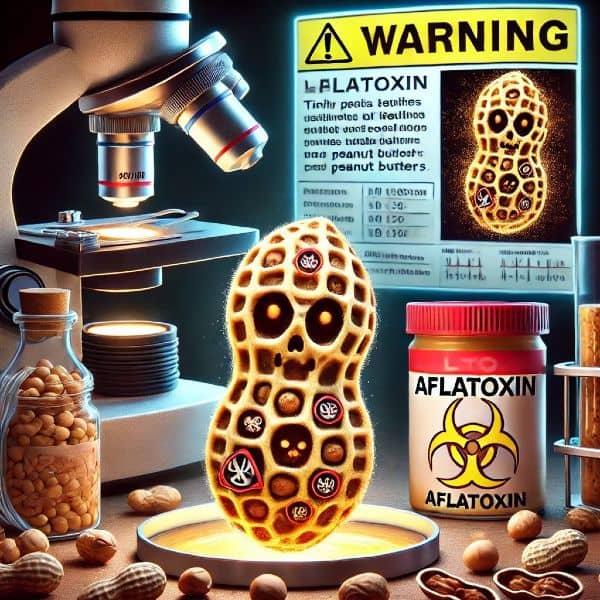
Peanut Lectins: More Bad News
As if aflatoxin wasn’t bad enough, peanuts are also loaded with lectins, and not the kind you can easily neutralize. Roasting them doesn’t help, either.
So, in summary:
✔ Not a nut
✔ High in plant toxins
✔ Laced with mold metabolites that are classified as carcinogens
✔ Lectins that refuse to be neutralized, no matter what you do
Still craving that peanut butter sandwich? Yeah, I thought so.
Final Verdict: Maybe It’s Time to Break Up with Peanuts
Now, I’m not saying you have to throw out your peanut butter jar immediately, but you might want to reconsider peanuts as your go-to snack.
Because at this point, eating peanuts isn’t just a dietary choice—it’s an act of bravery.
Still Not Convinced to Ditch Soy? Let Me Try Again.
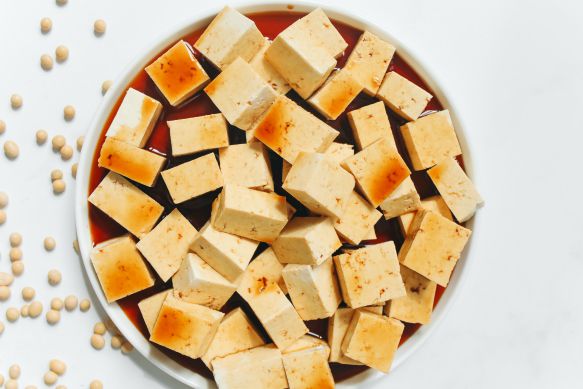
If I haven’t managed to scare you off soy yet, allow me to take another swing at it.
Yes, we already covered the phytoestrogen issue, but there’s another delightful surprise hiding in soy: trypsin inhibitors.
Now, trypsin is a digestive enzyme that breaks down protein, allowing your body to actually absorb the nutrients from your food. A trypsin inhibitor, however, does the exact opposite—it blocks trypsin, making it harder for your body to digest protein properly.
So, to put it bluntly: soy actively interferes with your ability to absorb protein. Which, considering soy is often marketed as a “high-protein” food, is a bit ironic, don’t you think?
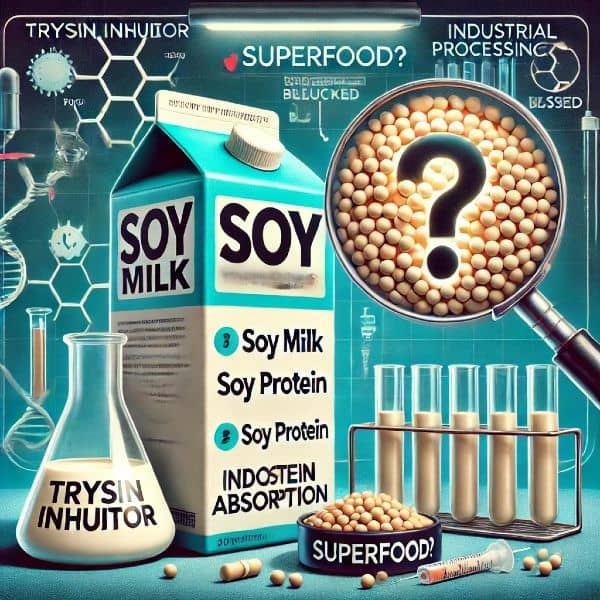
Soy Protein and Soy Milk: The Industrial Products Masquerading as Food
If you take nothing else away from this, please remember this:
✔ Soy protein is not food.
✔ Soy milk is not food.
These aren’t nutritional powerhouses—they’re highly processed industrial by-products that should have stayed in a lab rather than making their way onto grocery store shelves.
In fact, I physically cringe when I hear how these “foods” are actually made. If you think your protein shake or soy latte is the result of some wholesome, natural process, I regret to inform you that the reality is far closer to a science experiment gone wrong.
Final Thought: Don’t Fall for the Marketing Hype
I know the soy industry has poured billions into convincing people that soy is a superfood, but I’m hoping I’ve done enough to at least make you think twice before downing another soy-based product.
Because at the end of the day, if your “health food” actively works against your ability to digest protein, maybe—just maybe—it’s not as healthy as they say.
The Beans That Won’t Betray You: Green Beans and Peas for the Win
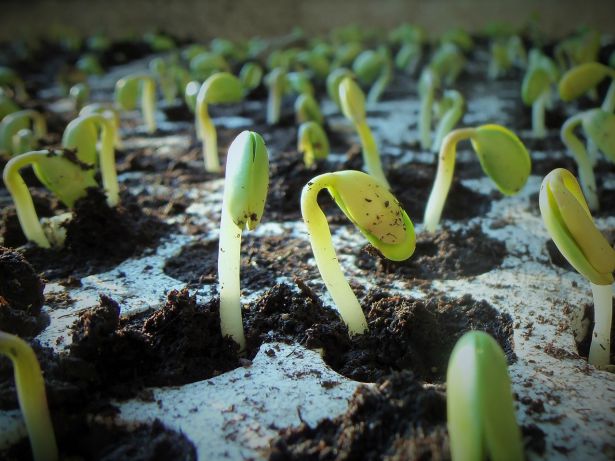
By now, you might be wondering if all beans are secretly plotting against you. But don’t worry—not all legumes are out to ruin your digestion and hormone balance.
Enter green beans and green peas—the honorary members of the “Not All Beans Are Evil” club.
Green Beans: The Exception to the Rule
Unlike their toxin-loaded cousins, green beans are actually low in the problematic plant compounds we’ve been ranting about. Here’s why they get a pass:
✔ Rich in folate, fiber, and essential vitamins and minerals (so you get nutrients without a side of digestive distress).
✔ Low in toxins like lectins and phytic acid (which means your body doesn’t have to go to war to digest them).
✔ Low FODMAP, making them far less likely to turn your stomach into a science experiment.
✔ Slow-carb with a low glycemic index, meaning they won’t send your blood sugar on a rollercoaster ride—which, if you’re aiming for weight loss, is a big win.
So, if you want to eat beans without fearing for your gut health, green beans are one of your safest bets.
Green Peas: The Underrated Superfood
Green peas may be small, but they come packed with a surprising amount of nutrition. Not only are they loaded with vitamins and minerals, but they also contain phytonutrients that help fight off major diseases like heart disease and cancer.
And just like green beans, they are:
✔ A slow-carb, meaning they digest gradually and keep blood sugar levels stable.
✔ Nutrient-dense without the typical legume baggage (less lectin, fewer digestive disasters).
Basically, peas are tiny but mighty, and you can eat them without worrying that they’re secretly plotting against you.
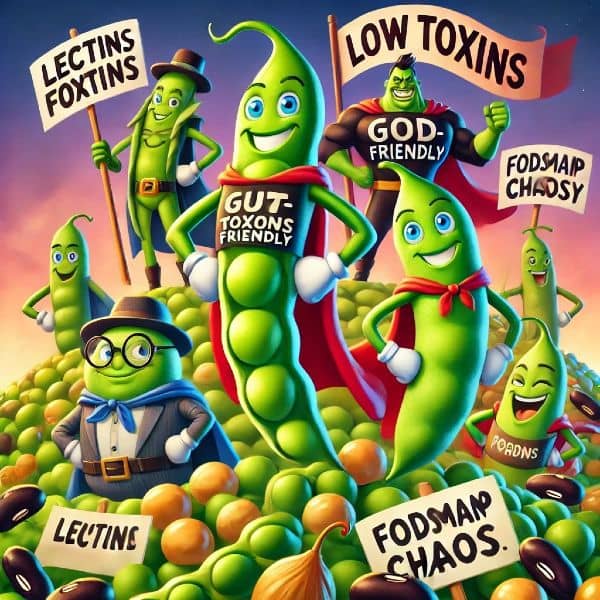
If You Must Eat Beans, Do It Right
For those who still insist on eating other beans, your best option is non-GMO, sprouted varieties.
✔ Sprouting helps break down some of the anti-nutrients, making them easier to digest and reducing their ability to steal your minerals.
✔ Non-GMO ensures you’re not getting an extra dose of lab-designed plant toxins (because let’s be honest, beans already have enough natural ones).
So, if you’re determined to keep beans in your life, at least sprout them and avoid the frankenfood versions.
Final Thoughts: Not All Beans Are Out to Get You
While most beans have their fair share of issues, green beans and peas are the least problematic of the bunch. They give you the benefits without the baggage, which is more than we can say for their high-lectin, FODMAP-heavy cousins.
So, next time you’re debating whether to embrace or banish beans from your life, just remember:
Green beans and peas? Acceptable.
Sprouted, non-GMO beans? Manageable.
Everything else? Approach with caution.
Want To Get Started On A New Lifstyle Right Away?
Or
Would You Like A Plan To Achieve Your Fitness Goals?
Sign Up For Online Personal Training!



